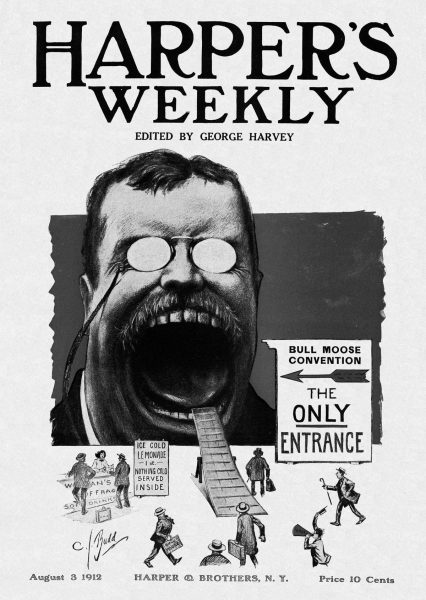Mazel Tov or Oy Vey? American Jews Divided Over Trump’s New Executive Order
“President Trump has taken a stance of trying to ‘help’ Israel, but he does it in very bizarre ways. He seems to have a good intention [with this executive order] but he doesn’t really think of the consequences,” said William Mesnick ’20.
By now we’re all used to a media firestorm surrounding President Trump’s apparent antisemitism or prejudice: in 2015, for example, the president accused a group of American Jews of “want[ing] to control your own politician.” On December 12, 2019, President Trump resparked old allegations when he signed a controversial executive order targeted at anti-Semitism on college campuses.
Anti-Semitism in institutions of higher learning is rising drastically according to a new report by the AMCHA Initiative (a non-profit dedicated to investigating anti-Semitism on college campuses). There has been an increase of graphic imagery and language specifically describing genocide and the destruction of Israel happening on school property.
Government action protecting the Jewish community is certainly necessary in the current climate, as the situation is only getting more serious. “In its 2017 audit, the Anti-Defamation League (ADL) identified nearly 2,000 incidents of anti-Jewish harassment, vandalism and assault in the United States,” as stated in the report in August 2018. “This was an alarming 57% increase over the number of incidents reported in 2016, the largest single-year increase since ADL began monitoring such data in 1979. Perhaps even more alarming is that 204 of these incidents occurred on college and university campuses, an 89% increase over the number of campus incidents reported in 2016.”
But President Trump’s executive order, which aims to redefine what Judaism is in order to close a loophole utilized by extremists and anti-Semites, has come under criticism by members of the Jewish community for alienating Jews and playing into the trope of “dual loyalty” — that is, that American Jews are Jewish first and American second — and limiting free speech.
So what is the loophole that the executive order was written to close?
The Civil Rights Act of 1964 allows the Department of Education to withhold funds from institutions or programs proven to discriminate on the basis of “race, color, or national origin.” Religion was not included in that descriptor, thus the aforementioned loophole. Although anti-Semites consider Jewish people as an individual race, the Department of Education does not, meaning that anti-Semitic statements can be difficult to take action against, as the statements can be defined as merely “criticizing a religion” which are allowed under a student’s First Amendment rights.
“As a grandchild of Holocaust survivors, I understand the horrors of anti-Semitism,” said Jared Kushner, one of the president’s senior advisors, in an Op-Ed in”The New York Times’ published on December 11, 2019. “Anti-Semites have grown increasingly brazen in claiming that attacks on Israel — and even on Jewish students who may or may not support Israel — are not anti-Semitic…This is a lie. Especially on college campuses, where discrimination, harassment and intimidation of Jewish students has become commonplace and is routinely, but wrongly, justified.”
While many members of the Jewish community including the Anti-Defamation League, an anti-hate organization formed to combat anti-Semitism, have supported the new executive order, it has its fair share of critics.
“Firstly, [the order] brings up a lot of questions which are hard to answer. Judaism is normally a religion passed on maternally, but you can still convert. If it’s a nationality, can you convert into it? So it opens up questions like that,” said William Mesnick ’20, a Jewish student who takes the Holocaust Leadership elective.
Some critics of the executive order claim that President Trump trying to make Judaism a separate nationality echoes Hitler trying to make Judaism a separate race. When asked for comment on this potential similarity, Mesnick said, “You did see a lot of the Nazi party making Jews a separate race. If you go to the [Bronx Science Holocaust] Museum, you can see these pseudo-scientific traits that all Jews supposedly share. So Trump’s statement is kind of similar in that regard, but it has a very different intention. Hitler very clearly tried to create an us versus them mentality with clear rhetoric about who was the superior race. This order does not have all of that complexity and bigotry to it.”
However, he does think President Trump’s executive order will help to combat anti-Semitism on college campuses. “The admissions aren’t supportive of the anti-Semitism that happens on college campuses, but I think they can turn a blind eye to it. I find it interesting to think about as a Jewish senior getting ready for college, because anti-Semitism on college campuses is a very real concern and it’s something that I worry about.”
While many members of the Jewish community including the Anti-Defamation League, an anti-hate organization formed to combat anti-Semitism, have supported the new executive order, it has its fair share of critics.
Sylvie Koenigsberg is a Copy Chief for ‘The Science Survey’ and a Student Life Reporter for ‘The Observatory’ who is intrigued by the ways different...











